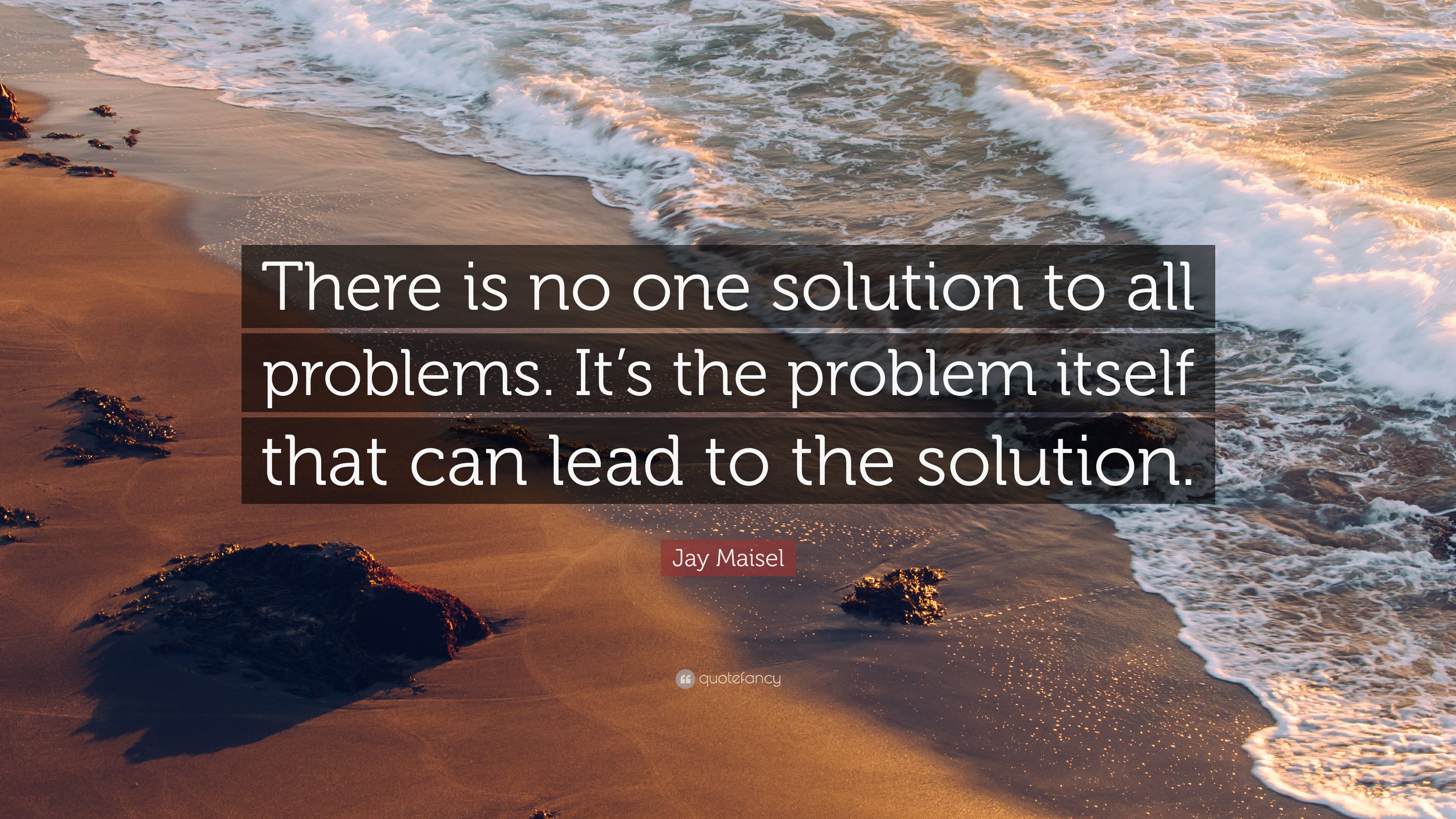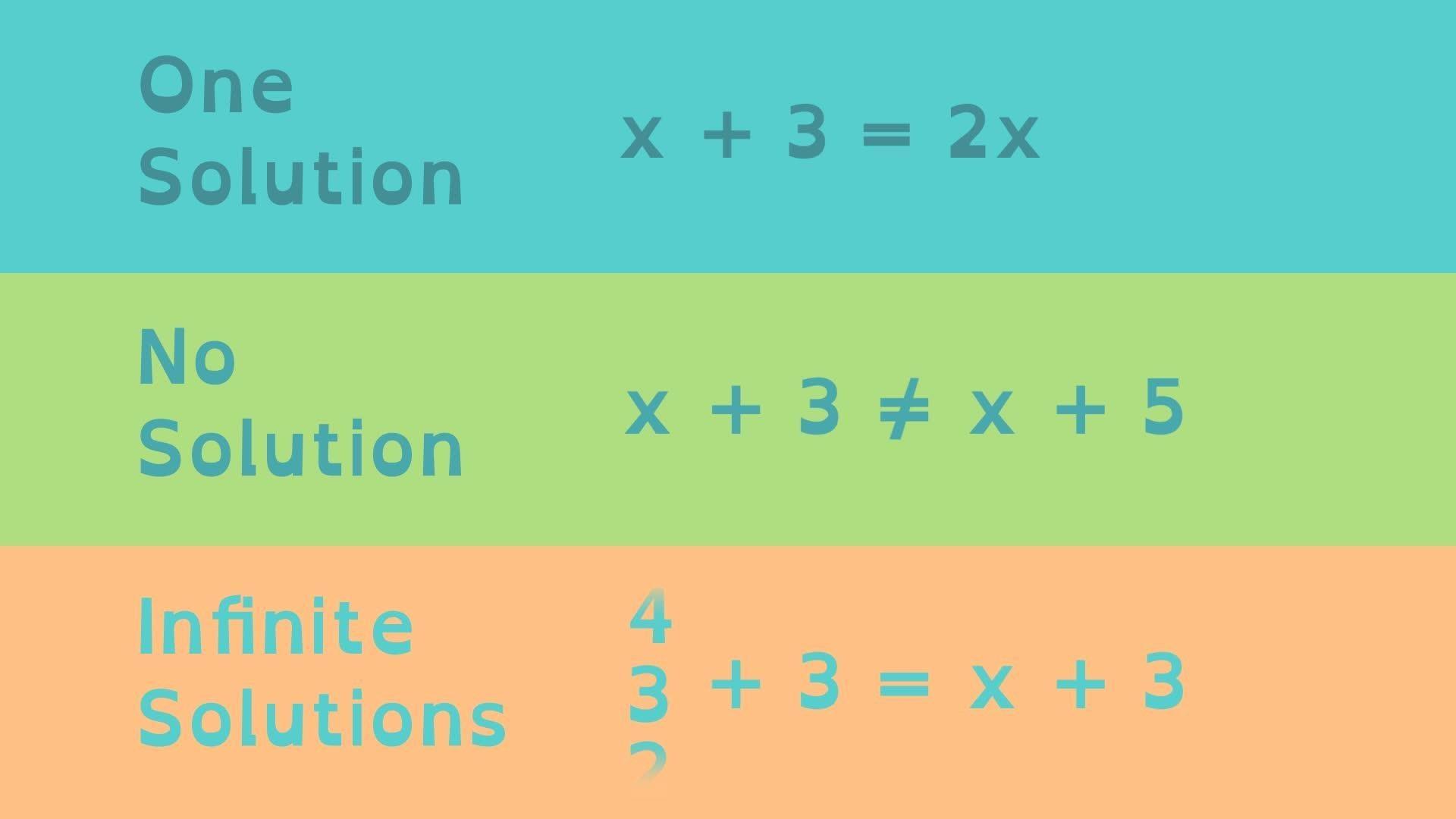There Is Only One Solution: A Straightforward Approach To Life's Toughest Problems
Life’s full of problems, and sometimes they feel like they’re piling up faster than we can handle them. But what if I told you there is only one solution to most of our struggles? Sounds too good to be true, right? Well, stick around because this ain’t some clickbait headline. We’re diving deep into the idea that no matter how complicated life gets, there’s always a way out—and it’s simpler than you think.
You’ve probably heard people say, “There’s more than one way to skin a cat.” And yeah, sure, sometimes there are multiple options on the table. But when push comes to shove, there is only one solution that truly works for the long haul. This isn’t about quick fixes or band-aid solutions; it’s about finding the root cause and tackling it head-on.
Now, before we dive deeper, let me ask you something: How often do you find yourself spinning your wheels, trying different approaches, but never really getting anywhere? If you’re like most people, probably more often than you’d like to admit. The truth is, the answer might be simpler—and closer—than you realize.
- Der Zwilling Mann Alles Ber Seine Eigenschaften Geheimnisse
- Ullu Tv Entdecke Die Welt Der Gewagten Webserien Ein Berblick
What Does "There Is Only One Solution" Really Mean?
When we talk about “there is only one solution,” we’re not talking about some mystical concept or a one-size-fits-all answer to every problem in existence. Instead, it’s about recognizing that every challenge has a core issue that needs addressing. Whether it’s a personal struggle, a work dilemma, or even a global crisis, the key lies in identifying the underlying cause and taking decisive action.
Think about it this way: If your car keeps breaking down, constantly replacing parts without fixing the engine isn’t going to solve the problem. Similarly, if you’re feeling overwhelmed at work, just working longer hours won’t cut it—you need to figure out what’s causing the stress and address it directly.
Why Most People Struggle to Find the Solution
Here’s the deal: most of us get caught up in the noise. We focus on symptoms instead of causes. We chase quick fixes instead of digging deeper. And honestly? That’s human nature. It’s easier to slap a band-aid on a wound than to perform surgery. But here’s the kicker—band-aids don’t heal; they just temporarily cover up the damage.
- Filme Streamen Leicht Gemacht Dein Guide Durch Die Onlinewelt
- Enthllt Was Steckt Wirklich Hinter Ryans World Ein Tiefer Einblick
- People often avoid confronting uncomfortable truths.
- We prioritize short-term relief over long-term success.
- Many of us lack the tools or mindset needed to tackle root causes.
But here’s the good news: once you start looking for the real solution instead of settling for half-measures, everything changes. You begin to see patterns, identify triggers, and develop strategies that actually work.
Identifying the Root Cause: A Step-by-Step Guide
Okay, so we’ve established that there is only one solution, but how do you find it? Let me break it down for you in simple terms:
- Ask the Right Questions: Start by asking yourself, “What’s really going on here?” Dig deep and be honest with yourself.
- Look for Patterns: Is this a recurring issue? If so, what common factors are involved?
- Seek Feedback: Sometimes, an outside perspective can help you see things you’re missing.
- Test Your Hypothesis: Once you think you’ve identified the root cause, try addressing it directly and see if it makes a difference.
Let’s take an example. Say you’re struggling to save money. Instead of blaming your salary or expenses, take a closer look at your spending habits. Are you impulse-buying? Do you have unnecessary subscriptions? By pinpointing the exact behaviors causing the problem, you can create a plan to change them.
The Importance of Self-Reflection
Self-reflection is key to finding the real solution. It’s not about beating yourself up over mistakes—it’s about understanding why those mistakes happen in the first place. When you reflect honestly, you gain clarity and insight that can guide your actions moving forward.
Here’s a quick exercise: Write down three challenges you’re currently facing. For each one, ask yourself:
- What’s the underlying cause?
- What steps can I take to address it?
- How will solving this problem improve my life?
Simple, right? Yet, it’s amazing how many people skip this step and jump straight into action without fully understanding the problem.
Implementing the Solution: Actionable Steps
Alright, so you’ve identified the root cause. Now what? Time to roll up your sleeves and get to work. Here’s a breakdown of actionable steps to help you implement the solution:
Step 1: Create a Plan
Your plan doesn’t have to be complicated. In fact, the simpler, the better. Break down the solution into manageable tasks and set deadlines for each one. For example, if your goal is to save money, your plan might look like this:
- Track all expenses for one month.
- Identify unnecessary spending.
- Set a monthly budget and stick to it.
Step 2: Stay Consistent
Consistency is the name of the game. You can have the best plan in the world, but if you don’t follow through, it’s useless. Make it a habit to review your progress regularly and adjust your strategy as needed.
Remember, change doesn’t happen overnight. It takes time, effort, and patience. But trust me, the results are worth it.
Common Mistakes to Avoid
Before we move on, let’s talk about some common mistakes people make when trying to solve their problems:
- Overcomplicating Things: Sometimes, the simplest solution is the best one. Don’t overthink it.
- Blaming Others: While external factors may contribute to your problems, ultimately, you’re responsible for finding the solution.
- Giving Up Too Soon: Solutions often require persistence. Don’t throw in the towel just because you don’t see immediate results.
Avoid these pitfalls, and you’ll be well on your way to success.
Case Studies: Real-Life Examples of "There Is Only One Solution"
To drive the point home, let’s look at a few real-life examples where people found success by focusing on the root cause:
Case Study 1: Weight Loss
John was struggling to lose weight despite trying every diet and exercise program under the sun. After months of frustration, he realized the real issue wasn’t his metabolism or lack of motivation—it was his emotional eating habits. By addressing the emotional triggers behind his overeating, John was finally able to shed the pounds and keep them off.
Case Study 2: Career Growth
Sarah felt stuck in her career, unable to advance despite her hard work. She thought the problem was her boss or the company culture, but after some reflection, she realized she lacked the specific skills needed for promotion. By investing in education and training, Sarah was able to move up the ladder and achieve her goals.
How to Stay Motivated
Finding the solution is one thing, but staying motivated to implement it is another. Here are a few tips to keep you on track:
- Set small, achievable goals to build momentum.
- Celebrate your progress, no matter how small.
- Surround yourself with supportive people who encourage your growth.
Motivation isn’t something that just happens—it’s something you cultivate. Keep reminding yourself why you started and what you’re working toward.
The Role of Mindset in Finding Solutions
Your mindset plays a huge role in your ability to solve problems. If you approach challenges with a fixed mindset, you’re more likely to give up when things get tough. On the other hand, a growth mindset encourages resilience and persistence.
Here’s how you can shift to a growth mindset:
- Embrace challenges as opportunities to learn.
- View failures as stepping stones to success.
- Focus on progress, not perfection.
When you adopt a growth mindset, you’ll find that even the toughest problems have solutions waiting to be uncovered.
Conclusion: Take Action Today
So there you have it—the power of “there is only one solution.” Whether you’re dealing with personal, professional, or global challenges, the key lies in identifying the root cause and addressing it directly. It’s not always easy, but it’s always worth it.
Now it’s your turn. Take what you’ve learned and apply it to your own life. Start small, stay consistent, and watch as your problems transform into opportunities for growth.
And hey, don’t forget to share this article with someone who could benefit from it. Knowledge is power, and together, we can make a difference.
Table of Contents
- What Does "There Is Only One Solution" Really Mean?
- Why Most People Struggle to Find the Solution
- Identifying the Root Cause: A Step-by-Step Guide
- The Importance of Self-Reflection
- Implementing the Solution: Actionable Steps
- Common Mistakes to Avoid
- Case Studies: Real-Life Examples of "There Is Only One Solution"
- How to Stay Motivated
- The Role of Mindset in Finding Solutions
- Conclusion: Take Action Today
- Erwan Heussaff Vom Hobby Zum Erfolg Die Ganze Geschichte
- Alex Christoforou Unabhngige Medien Analysieren Die Welt

John Lennon Quote “There are no problems, only solutions.”

Jay Maisel Quote “There is no one solution to all problems. It’s the

Understanding Solutions to Linear Equations PBS LearningMedia